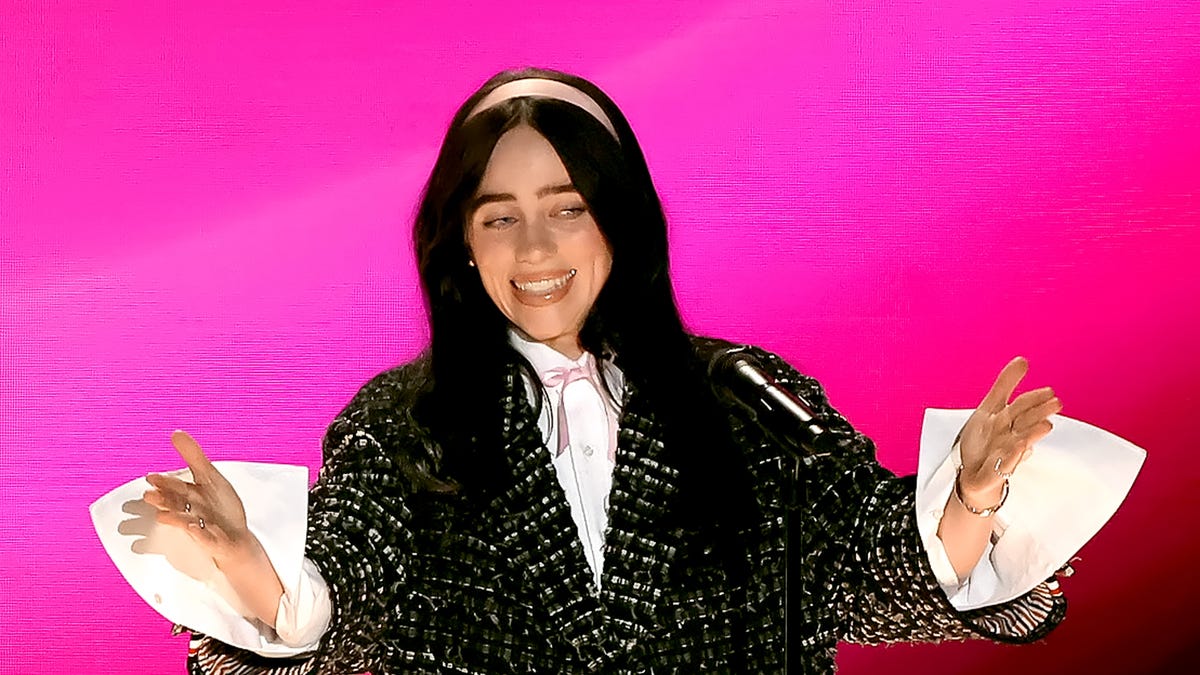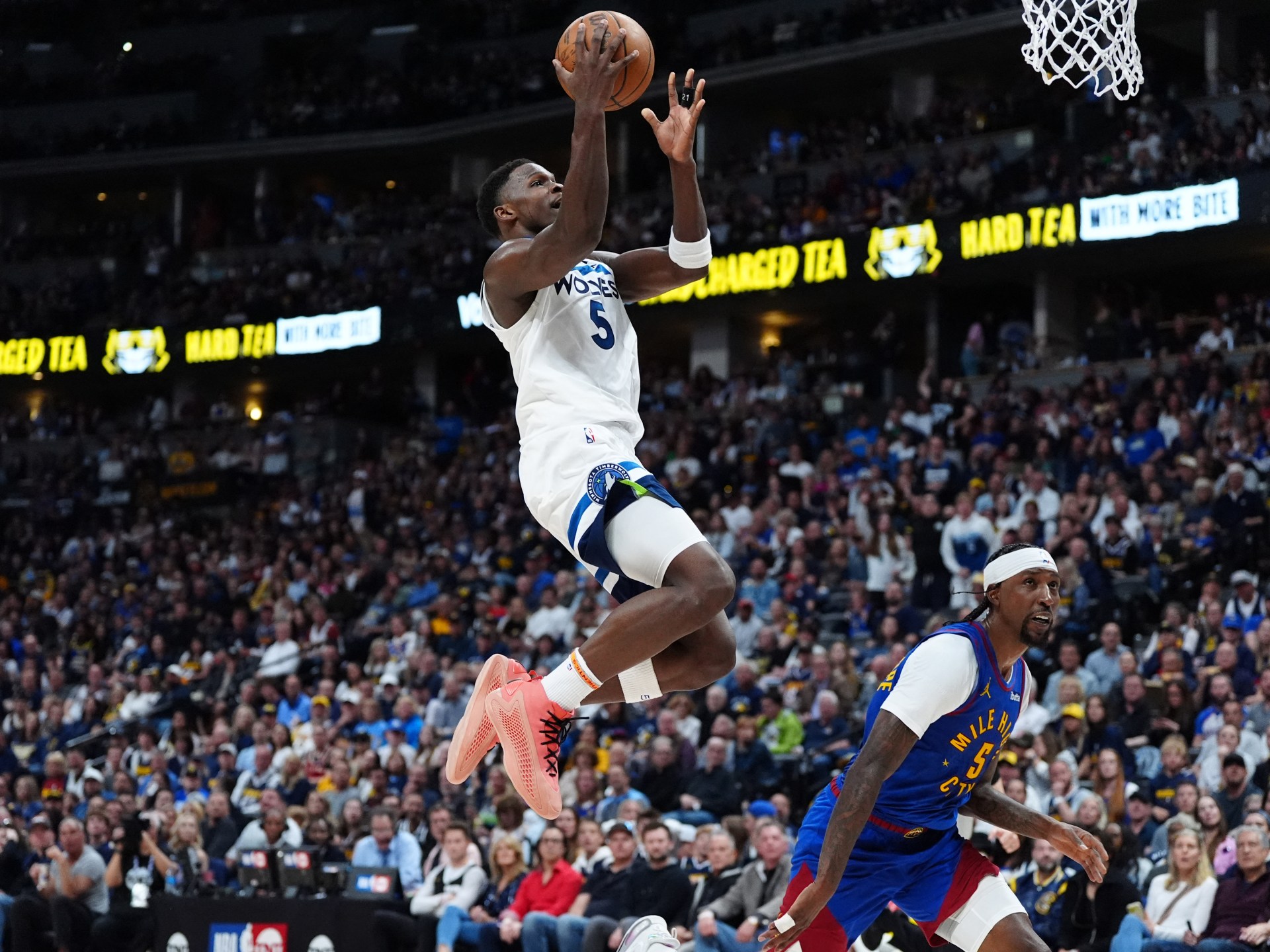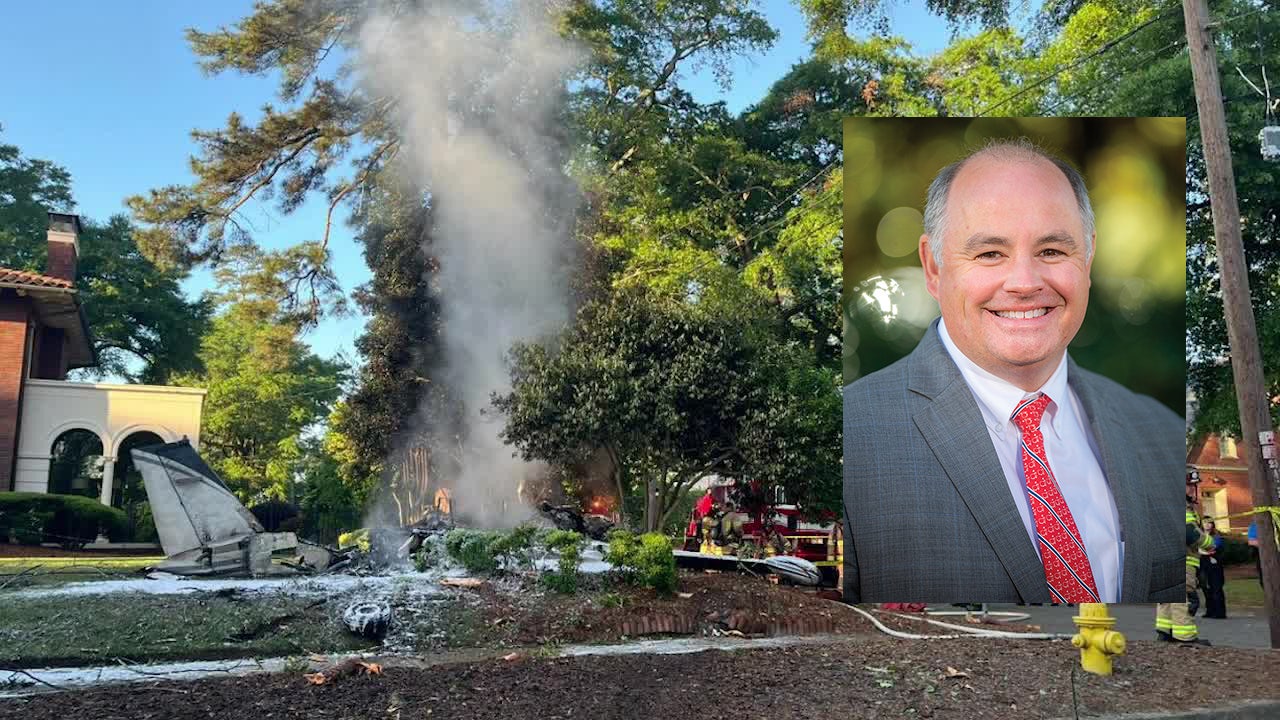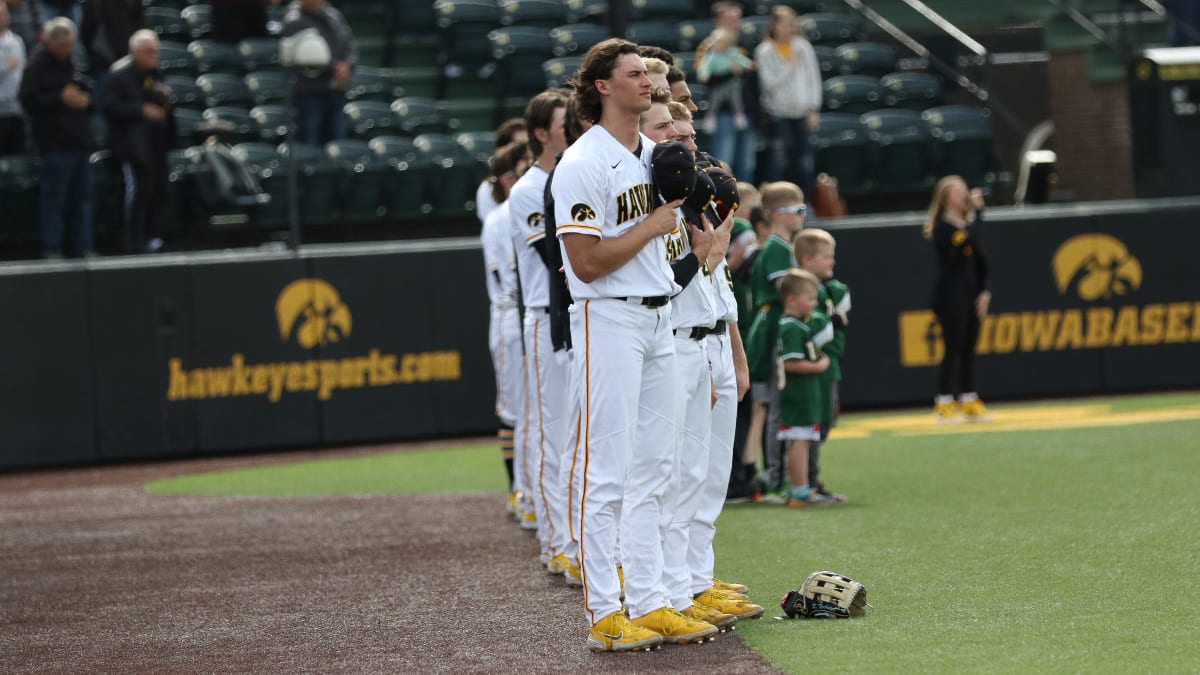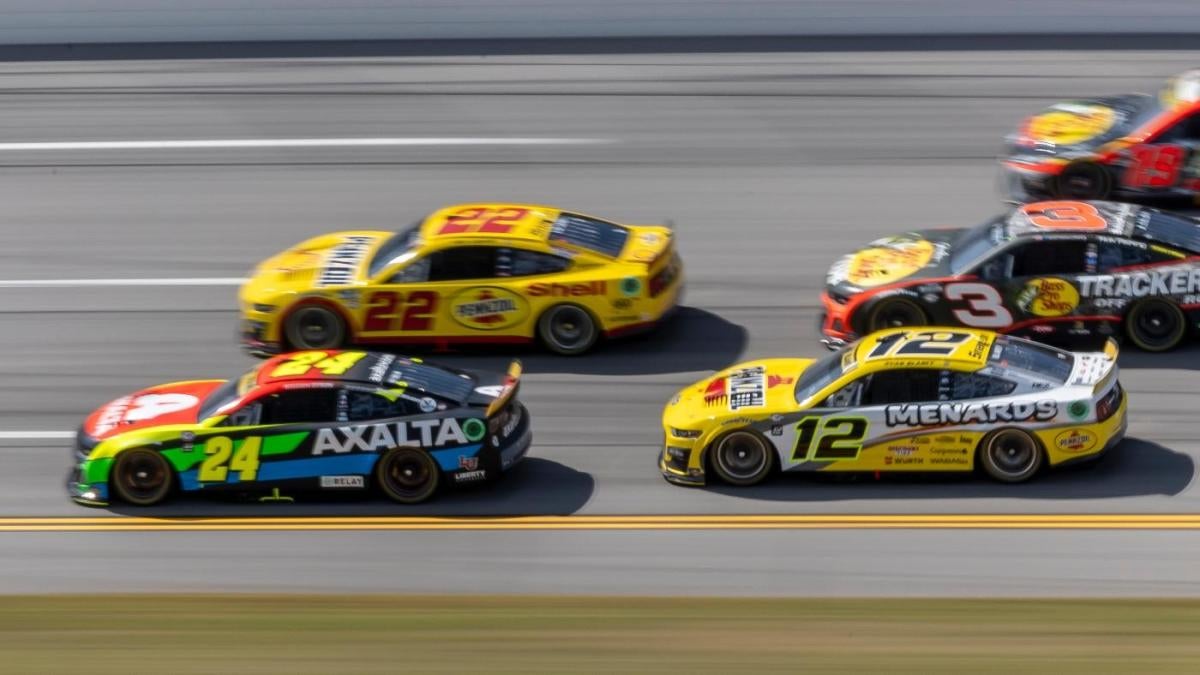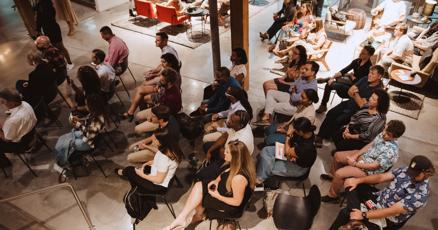World
What is the history of foreign interventions in Haiti?

The proposal initially sparked an uproar. In October 2022, then-Haitian Prime Minister Ariel Henry and 18 top officials called on the international community to send a “specialised armed force” to help combat the spread of gang violence in Haiti.
But Haiti has struggled with a long, fraught history of foreign involvement — and the prospect of a new wave of outside interference was met with scepticism.
Now, experts say that public opinion is shifting in Haiti, as the violence continues to fester and Haiti’s already tenuous government is on the verge of yet another shake-up.
“In October 2022, most Haitians were against an international force,” said Pierre Esperance, executive director of Haiti’s National Human Rights Defense Network (RNDDH). “But today most Haitians will support it because the situation is worse, and they feel there are no other options.”
Still, the history of international involvement in Haiti casts such a long shadow that it continues to be a divisive subject — both among the Haitian people and the outside forces that would potentially be involved.
A new level of crisis
The instability in Haiti entered a new chapter this week when Prime Minister Henry — an unelected official who has been serving as de facto president — announced that he planned to resign.
The announcement came after mounting international pressure, as well as threats from the gangs themselves. One of the country’s most notorious gang leaders, Jimmy “Barbecue” Cherizier, told reporters that a “civil war” would erupt if the deeply unpopular Henry did not step down.
The calls for an international force to intervene arise from the acute nature of the situation, Esperance and other experts told Al Jazeera.
Gang violence has forced more than 362,000 Haitians from their home, largely in and around the capital of Port-au-Prince. The United Nations estimates that at least 34,000 of those have been displaced since the start of the year.
Armed groups have also taken control of roadways and other vital arteries around the country, limiting the flow of supplies. With high rates of poverty already driving malnutrition, the UN has warned the country is at risk of famine.
“The gangs control more than 95 percent of Port-au-Prince,” Esperance said. “Hospitals don’t have materials, there’s not enough drinking water, the supermarkets are almost empty. People are staying at home because it’s very dangerous.”
Will Kenya take the lead?
With gang violence at crisis levels and Haiti’s government in shambles, some Haitians are increasingly looking abroad for assistance.
An August poll released by the business alliance AGERCA and the consultancy DDG found that about 63 percent of Haitians supported the deployment of an “international force” to combat the gangs.
An even higher portion — 75 percent — said the Haitian police needed international support to reestablish order.
But countries like the United States and Canada have baulked at the prospect of helming such a force themselves, though they have offered to back other governments that might lead one.
In July 2023, Kenya announced it would be willing to deploy forces to Haiti and potentially lead a multinational security mission.
The UN Security Council threw its support behind the initiative, approving the Kenya-led mission. But the effort has since stalled, amid court challenges and other slowdowns.
In January, a Kenyan court ruled that deploying forces in Haiti would be “illegal and invalid”. And just last Tuesday, Kenyan officials said they would pause any deployment to Haiti until a new government was in place.
Jonathan Katz, the author of the book The Big Truck That Went By: How the World Came to Save Haiti and Left Behind a Disaster, told Al Jazeera that the international community’s hesitation to lead a mission to Haiti is a testament to the poor track record of past foreign interventions.
“These countries are saying, ‘We need to do this because we can’t think of any other solution,’” said Katz. “But nobody wants to do it themselves because every single one of these interventions throughout Haiti’s history have ended with significant egg on the face for everyone involved.”
‘A direct colonial occupation’
Since the early 1900s, there have been at least three direct interventions in Haiti, including a decades-long occupation by US forces.
That occupation lasted from 1915 to 1934 and was carried out in the name of restoring political stability after the assassination of then-President Vilbrun Guillaume Sam.
But during their time in Haiti, US forces oversaw widespread human rights abuses and the implementation of a “corvée”, a system of forced labour sometimes likened to slavery.
“Slavery it was — though temporary,” said US civil rights leader James Weldon Johnson, writing for The Nation magazine in 1920.
“By day or by night, from the bosom of their families, from their little farms or while trudging peacefully on the country roads, Haitians were seized and forcibly taken to toil for months in far sections of the country.”
US soldiers even removed substantial funds from the Haitian National Bank, carting them off to New York.
“This was a direct colonial occupation that began under US President Woodrow Wilson and lasted for five administrations, both Republican and Democrat,” Katz said of that period. “Later occupations were carried out with varying degrees of directness and indirectness.”
A hand in Haiti’s politics
For instance, the US would intervene again in Haitian politics during the Cold War, as it propped up governments friendly to its interests in the name of anti-Communism.
Positioning himself as an anti-Communist leader upon his election in 1957, Haitian President Francois “Papa Doc” Duvalier actively courted US support, even as he led a brutal campaign of state violence against his own people.
Despite misgivings about Duvalier, the US offered him aid: US Ambassador Robert Newbegin, for instance, arrived in Port-au-Prince prepared to give Duvalier’s administration approximately $12.5m in 1960 alone.
One estimate puts the total US support given to Haiti under Duvalier and his son, Jean-Claude “Baby Doc” Duvalier, at $900m. Meanwhile, the Duvaliers faced accusations of murder, torture and other violations.
The US also sent troops to intervene directly in Haiti. In 1994, for instance, US President Bill Clinton sent a contingent of about 20,000 troops to restore Haitian President Jean-Bertrand Aristide to power after he was overthrown by the country’s military in 1991.
That deployment took place in parallel with a UN mission that ran from 1993 to 2000, also with the support of the US.
In 2004, Aristide was overthrown once more, but this time, the US encouraged him to step down, flying him out of the country and sending troops to the island alongside nations such as France and Chile.
That force was then replaced by the United Nations Stabilisation Mission in Haiti, known as MINUSTAH, which lasted from 2004 until 2017 and was led by the Brazilian military.
While MINUSTAH was tasked with enhancing security, it soon faced allegations of committing rape and other atrocities against civilians. A massive cholera outbreak that killed more than 9,300 people was also traced back to a sewage leak from a UN facility.
A Haitian-led future
Given its pockmarked history of Haitian intervention, the US has expressed wariness towards leading a new international mission to Haiti. Many are calling for solutions to be Haitian-led, instead of foreign-led.
“We need to give the Haitians time and space to get this right,” former US special envoy to Haiti, Daniel Foote, said in a recent interview with NPR.
“Let’s let the Haitians have a chance to mess up Haiti for once. The international community has messed it up beyond recognition countless times. I guarantee the Haitians mess it up less than the Americans,” he added.
For his part, Katz said the Kenya-led mission, with its UN backing, would have provided a buffer for the US and other powers that have a checkered history in the region.
In the 20th century, the US carried out these occupations of Haiti. Later, you get these outsourced occupations by the UN, which the US supports,” said Katz.
“But these always turn out poorly for the reputations of those involved, and they never leave the country on a better footing. So now with this Kenyan-led initiative, you have an almost double-outsourced intervention.”
A last resort
But with the Haitian government in disarray and violence rampant, some experts question what systems are in place to foster recovery.
President Jovenel Moise’s assassination in 2021 left a power vacuum in Haiti’s government, and no general elections have been held since. Katz argues the US made the situation worse by lending support to Henry, whose popularity has cratered amid questions about his commitment to democracy.
“Anybody paying attention has been saying for years that this was an unsustainable situation that was going to explode,” said Katz. “When there’s no legitimate democracy, it opens the door for people with the most firepower.”
Both Katz and Esperance point out that, while countries like the US have helped equip the Haitian National Police, the boundary between the officers and the gangs they are meant to combat is often porous.
The gang leader Cherizier, for instance, is himself a former member of the Haitian National Police’s riot control branch.
The result is that Haitians feel like they have no choice but to look abroad, Esperance explained.
“We need a functional government. An international force will not be able to solve the problem of political instability,” said Esperance. “At the same time, Haiti cannot wait. We are in hell.”

World
What a judge's gag order on Trump means in his hush money case
NEW YORK (AP) — Virtually every day of his hush money criminal trial, former President Donald Trump talks about how he can’t talk about the case.
A gag order bars Trump from commenting publicly on witnesses, jurors and some others connected to the matter. The New York judge already has found that Trump, the presumptive Republican nominee for president, repeatedly violated the order, fined him $9,000 and warning that jail could follow if he doesn’t comply.
But the order doesn’t stop Trump from talking about the allegations against him or commenting on the judge or the elected top prosecutor. And despite a recent Trump remark, it doesn’t stop him from testifying in court if he chooses.
As he fights the felony charges against him while running for president, Trump has at times stirred confusion about what he can and can’t do in the case. He has pleaded not guilty.
So what does the order do, what doesn’t it and where did it come from?
WHAT IS A GAG ORDER?
Generally speaking, a gag order is a judge’s directive prohibiting someone or people involved in a court case from publicly commenting about some or all aspects of it. In Trump’s case, it’s titled an “Order Restricting Extrajudicial Statements,” with “extrajudicial” meaning outside of court.
Gag orders, particularly in high-profile cases, are intended to prevent information presented outside a courtroom from affecting what happens inside.
Trump also is subject to a gag order in his federal criminal election interference case in Washington. That order limits what he can say about witnesses, lawyers in the case and court staff, though an appeals court freed him to speak about special counsel Jack Smith, who brought the case.
In his recent New York civil fraud trial, Trump was fined a total of $15,000 for comments he made about that judge’s law clerk after a gag order barred participants in the trial from “posting, emailing or speaking publicly” about the court’s staff.
The U.S. Supreme Court has acknowledged that gag orders can pit fair trial rights against free speech rights. The court has struck down some orders that barred the press from reporting on certain cases or court proceedings and rejected as too vague a Nevada court rule that limited what all lawyers could say out of court.
IS TRUMP FIGHTING THE GAG ORDER?
Yes. Before the trial, he asked a state appeals court to postpone the trial while he appeals the gag order, but the court refused. His appeal of the order itself is ongoing.
WHO IS COVERED BY THE GAG ORDER ON TRUMP?
Initially imposed March 26, the gag order bars Trump from making or directing others to make public statements about any juror and about any “reasonably foreseeable” witness’ participation in the investigation or the trial.
It also bars any statements about lawyers in the case, court staffers, prosecution aides and relatives of all of the above, to the extent that the statements are intended to “materially interfere with, or to cause others to materially interfere with” their work on the case “or with the knowledge that such interference is likely to result.”
The order doesn’t apply to Judge Juan M. Merchan or to Manhattan District Attorney Alvin Bragg, whose office is bringing the case. It does apply to comments about their family members, however. Merchan added that provision on April 1 after Trump lashed out on social media at the judge’s daughter, a Democratic political consultant, and made a claim about her that was later repudiated by court officials.
Trump is also allowed to talk about his political opponents, as Merchan made clear on Thursday.
The order also doesn’t bar witnesses from commenting on Trump. Michael Cohen, Trump’s ex-lawyer and an expected witness, has routinely attacked his former boss, leading Trump to complain about not being able to respond in kind.
CAN TRUMP TESTIFY?
Yes. The U.S. Supreme Court has held that criminal defendants have a constitutional right to take the stand in their own defense — or not to.
There was some confusion after Trump said Thursday that because of the gag order, he was “not allowed to testify.” In context, it appeared he was actually referring to his ability to respond to a reporter’s court-hallway question about a witness’ testimony that afternoon.
Trump clarified to reporters Friday that he understood the order wasn’t a bar on testifying. Merchan emphasized the same in court.
“I want to stress, Mr. Trump, you have an absolute right to testify at trial, if that’s what you decide to do after consultation with your attorneys,” Merchan said.
WHY DID TRUMP GET FINED? WHAT CAN’T HE SAY?
Merchan found that Trump violated the gag order with social media posts that laid into Cohen. Among the offending posts: one that asked whether “disgraced attorney and felon Michael Cohen been prosecuted for LYING,” a repost of a New York Post article that described Cohen as a “serial perjurer,” and a Trump post referring to Fox News host Jesse Watters’ claim that liberal activists were lying to infiltrate the jury.
Merchan noted that Trump’s comment on the Watters segment misstated what the host had actually said, making the comment “the words of Defendant himself.”
On the other hand, Merchan declined to sanction Trump for an April 10 post that referred to Cohen and Stormy Daniels, the porn performer who got a $130,000 hush money payment that’s at the heart of the case, as “sleaze bags.”
Trump contended that he was responding to previous comments by Cohen, and the judge said the back-and-forth gave him pause as to whether that post met the bar for a violation.
COULD TRUMP REALLY GO TO TO JAIL OVER THE GAG ORDER?
When Merchan fined Trump $1,000 apiece for nine violations — the maximum fine allowed by law — he wrote that “jail may be a necessary punishment” for some wealthy defendants who won’t be deterred by such a sum.
Merchan added that he “will not tolerate continued willful violations” of the gag order and that, if “necessary and appropriate,” he “will impose an incarceratory punishment,” meaning jail.
It’s unclear what would rise to the level of “necessary and appropriate.”
Defense lawyer Todd Blanche indicated in court Friday that he plans to appeal the judge’s finding this past week that Trump violated the gag order.
Prosecutors have asked Merchan to hold Trump in contempt again and fine him $1,000 for each of four alleged violations from April 22-25. But the prosecution isn’t asking for the former president to be locked up over those comments because they happened before Merchan’s jail warning and because “we’d prefer to minimize disruption to this proceeding,” prosecutor Christopher Conroy said.
World
Fourth body found in search for US and Australian surfers who mysteriously vanished in Mexico
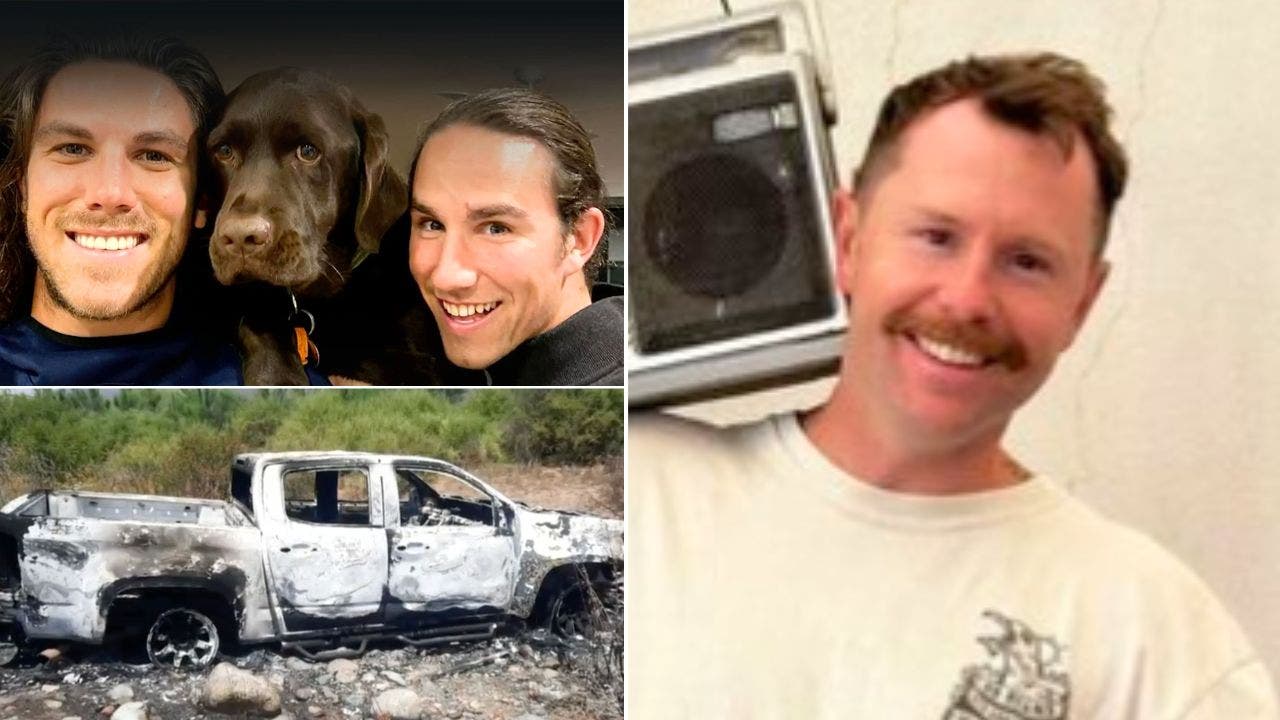
A fourth body has reportedly been discovered in a popular Mexican tourist area, where an American and two Australians vanished last week while on an apparent camping and surfing trip, the local prosecutor’s office said in a statement late on Friday.
American Jack Carter Rhoad, 30, as well as Australian brothers Callum Robinson, 33, and Jake Robinson, 30, were last seen on April 27, the Baja California state prosecutor’s office previously announced. They did not show up at their planned accommodation last weekend.
Investigators discovered three bodies dumped in a pit while searching for the trio on Friday, although officials have not confirmed if the bodies are those of the missing men.
The fourth body was found nearby, the New York Post and other outlets reported. It’s unclear if it’s connected to the other three.
2 AMERICANS FOUND DEAD IN HOTEL ROOM IN MEXICO’S BAJA CALIFORNIA
Australian brothers Callum Robinson and Jake Robinson, top left, and US citizen Jack Carter Rhoad, right, who are missing in Mexico. (Reuters)
Forensic tests on the remains will be conducted by a state laboratory, which will allow for positive identification of the bodies, the prosecutor’s office said in its statement.
Investigators continue to search the rugged area where the bodies were found for additional evidence, the statement added.
The bodies were found in a rugged hillside area in the Mexican state of Baja California near the popular tourist town of Ensenada, about 90 minutes south of the U.S.-Mexico border. Video from the scene shows rescuers installing ropes to enter the pit where the bodies were discovered. The site is cordoned off by police, while a navy boat was also visible in the sea nearby.
The site where the bodies were discovered near the township of Santo Tomás, was near the remote seaside area where the missing men’s tents and the burned-out Chevrolet Colorado pickup truck were found Thursday on a remote stretch of coast.
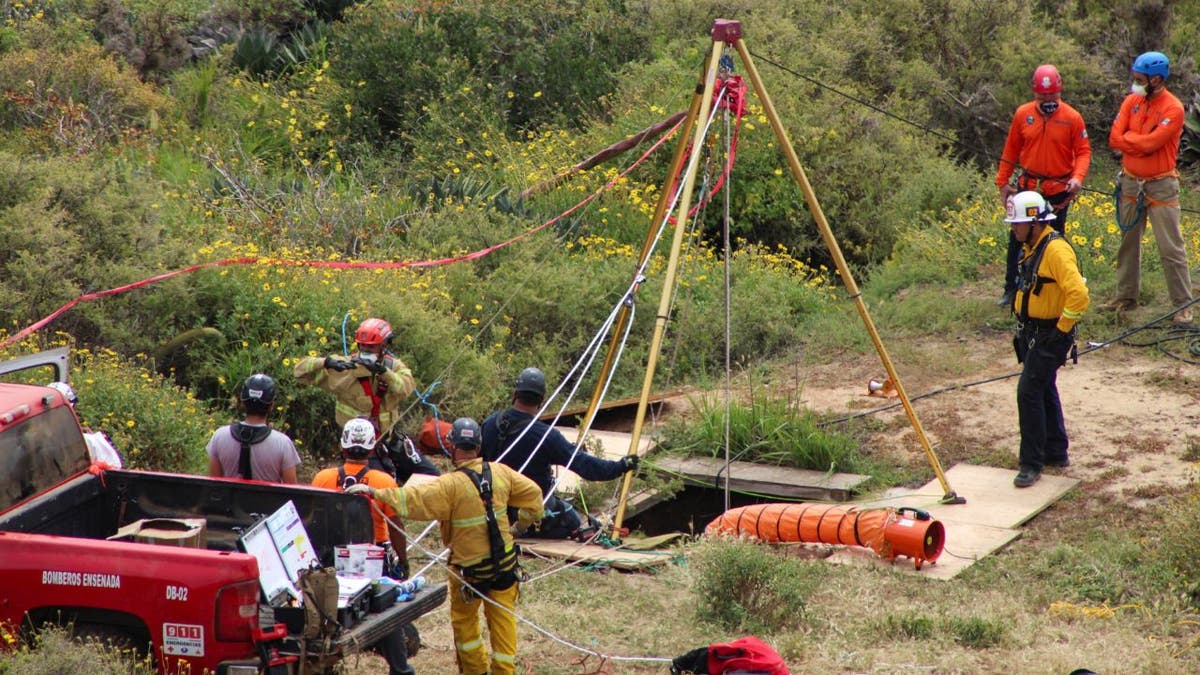
Members of a rescue team work at a site where three bodies were found in Baja California. The team have been looking for one American and two Australian tourists who have been reported missing. (Reuters)
It is unclear what types of injuries the victims suffered or how they died.
“There is a lot of important information that we can’t make public,” María Elena Andrade Ramírez, the chief state prosecutor said.
Baja California prosecutors said Friday that three people had been arrested and charged with a crime equivalent to kidnapping. It was unclear if they might face more charges.
Ensenada Mayor Carlos Ibarra Aguiar said in a news release that a 23-year-old woman had been detained with drugs and a cellphone that had a wallpaper photo of one of the missing men, The San Diego Union-Tribune reports. Officials didn’t specify how the three people were connected to the investigation, saying only that some were directly involved and others indirectly.
LUXURY RESORT SHUTTERS IN MEXICO’S BAJA CALIFORNIA AFTER MYSTERIOUS DEATHS OF 2 AMERICANS

A missing persons’ poster of the trio was distributed earlier this week. (Reuters)
Investigators said that a missing persons report was filed 48 hours after the men were last seen, although the prosecutor’s office began investigating as soon as posts began circulating on social media.
María Elena Andrade Ramírez, the chief state prosecutor, said that while drug cartels are active in the area, she said, “all lines of investigation are open at this time. We cannot rule anything out until we find them.”
The Baja California Attorney General’s Office has said that it has maintained contact with the FBI and relatives of the victims, through consular agencies.
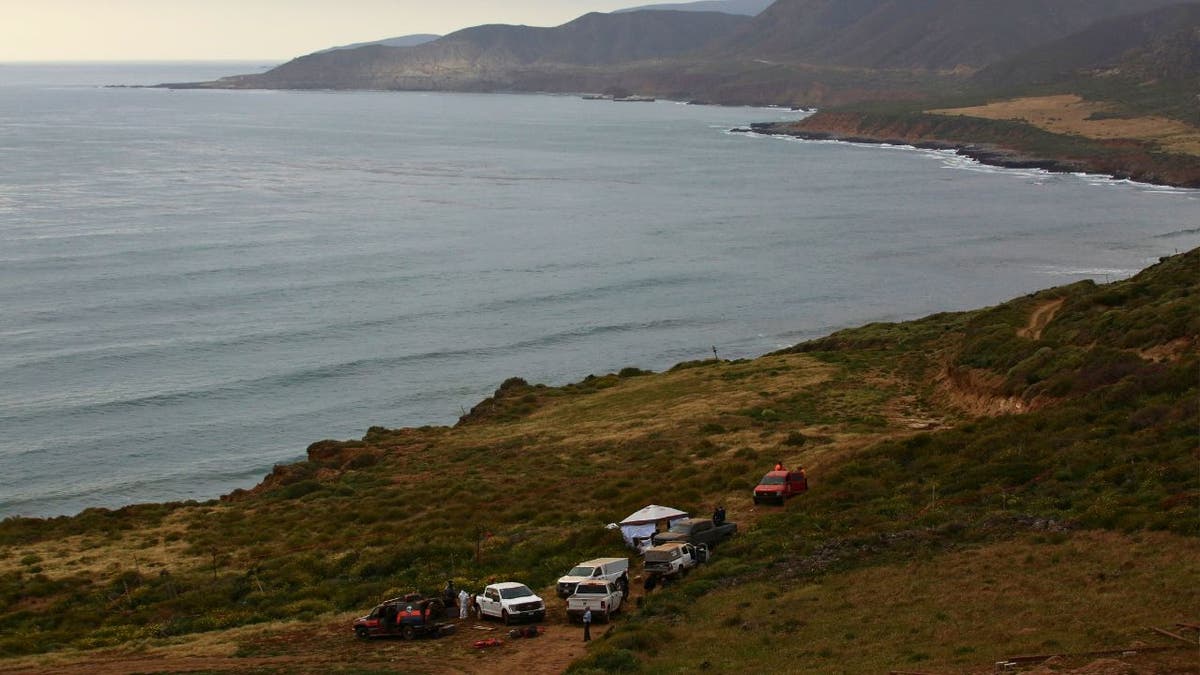
Members of a rescue team work at a site where three bodies were found in the state of Baja California where one American and two Australian tourists were reported missing.
On Wednesday, the missing Australians’ mother, Debra Robinson, posted on a local community Facebook page an appeal for help in finding her sons and noted that Callum is diabetic.
The Australian media reports that Jake is a doctor, while Callum lives in San Diego and is a member of Australia’s national lacrosse team.
The State Department’s travel advisory lists Baja California under its “reconsider travel” category due to crime and kidnapping.
In 2015, two Australian surfers, Adam Coleman and Dean Lucas, were killed in western Sinaloa state, across the Gulf of California — also known as the Sea of Cortez— from the Baja peninsula. Authorities say they were victims of highway bandits.
Reuters and The Associated Press contributed to this report.
World
German socialist candidate attacked before EU elections

Matthias Ecke, a member of Germany’s centre-left Social Democratic Party, was attacked on Saturday while out campaigning.
A candidate for Chancellor Olaf Scholz’s centre-left party in next month’s European Parliament election has been seriously injured while campaigning in eastern Germany, the party said on Saturday.
Matthias Ecke, a Social Democrats (SPD) candidate, was attacked while putting up political posters in Dresden on Friday evening, according to the party.
He was taken to hospital and required surgery for his injuries, it said.
Police said the 41-year-old was hit and kicked by four men and that the same group had apparently attacked a Green Party worker minutes before in the same street.
Interior Minister Nancy Faeser, also a Social Democrat, said if it’s proven that the assault on Ecke was politically motivated, it would represent “a serious attack on democracy.”
The attack was the latest in a series of incidents raising political tensions in Germany ahead of the European Parliament election.
Scholz’s SPD launched their official campaign for the 9 June vote with a rally last week in Hamburg, where the German leader grew up.
“We are experiencing a new dimension of anti-democratic violence,” Faeser said.
She promised “tougher action and further protective measures for the democratic forces in our country.”
Government and opposition parties say their members and supporters have faced a wave of physical and verbal attacks in recent months and have called on police to step up protection for politicians and election rallies.
Many of the incidents have occurred in the former communist east of the country, where the far-right Alternative for Germany party (AfD) is expected to make gains in the European elections and upcoming votes in Germany.
Last week, the car carrying the vice-president of the German parliament, Katrin Goering-Eckardt of the Greens, was surrounded for nearly an hour by protesters as she tried to leave a rally.
The opposition Christian Democrats and the Left party say their workers have also faced intimidation and seen their posters ripped down.
Mainstream parties accuse the AfD of links to violent neo-Nazi groups and of fomenting an increasingly harsh political climate. A prominent AfD leader, Bjoern Hoecke, is currently on trial accused of using a banned Nazi slogan.
Germany’s domestic intelligence service has placed some chapters of the party under surveillance.
The branch of the Social Democrats in Saxony state, where Ecke is their lead candidate for the European elections, said their campaign would go on despite “fascist methods” of intimidation.
“The seeds that the AfD and other right-wing extremists have sown are germinating,” the branch leaders, Henning Homann und Kathrin Michel, said in a joint statement. “These people and their supporters carry responsibility for what is happening in this country.”
-

 News1 week ago
News1 week agoFirst cargo ship passes through new channel since Baltimore bridge collapse
-

 World1 week ago
World1 week agoHaiti Prime Minister Ariel Henry resigns, transitional council takes power
-

 Movie Reviews1 week ago
Movie Reviews1 week agoAbigail Movie Review: When pirouettes turn perilous
-

 World1 week ago
World1 week agoEU Parliament leaders recall term's highs and lows at last sitting
-

 Politics1 week ago
Politics1 week ago911 call transcript details Democratic Minnesota state senator’s alleged burglary at stepmother's home
-

 Politics1 week ago
Politics1 week agoGOP lawmakers demand major donors pull funding from Columbia over 'antisemitic incidents'
-

 Science1 week ago
Science1 week agoOpinion: America's 'big glass' dominance hangs on the fate of two powerful new telescopes
-

 World1 week ago
World1 week agoHamas ‘serious’ about captives’ release but not without Gaza ceasefire

